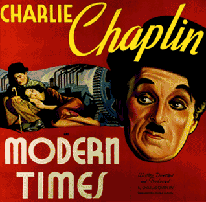|
● Early
Nineteenth Century
● Late
Nineteenth Century
● Early
Twentieth Century
● Mid-twentieth
Century
● Late
Twentieth Century
Late Nineteenth Century
|
|
|
Edison's Gramophone
(phonograph)
|
 Electricity
was playing its role in communications during the nineteenth century,
yet a new use for this source of power was developed by the most
famous of all American inventors, Thomas
Alva Edison, whose workshops located in Menlo Park, NJ,
brought forth the system of motion pictures, the phonograph,
and, as everyone knows, the electric light. This productivity earned
Edison the title of The Wizard of Menlo Park. Regarding the
electric light, most people concentrate attention on the story of
the long search for a suitable filament that would not burn
out after a short life of intense heat. Yet the successful
development of electrical lighting depended more on solving less
dramatic problems than that. The technology of electric lighting
is a system. As Edison himself put it: Electricity
was playing its role in communications during the nineteenth century,
yet a new use for this source of power was developed by the most
famous of all American inventors, Thomas
Alva Edison, whose workshops located in Menlo Park, NJ,
brought forth the system of motion pictures, the phonograph,
and, as everyone knows, the electric light. This productivity earned
Edison the title of The Wizard of Menlo Park. Regarding the
electric light, most people concentrate attention on the story of
the long search for a suitable filament that would not burn
out after a short life of intense heat. Yet the successful
development of electrical lighting depended more on solving less
dramatic problems than that. The technology of electric lighting
is a system. As Edison himself put it:
|
The lamps must be adapted to the
current of the dynamos, and the dynamos must
be constructed to give the character of the current required
by the lamps, and likewise all parts of the system must be
constructed with reference to all other parts, since,
in one sense, all the parts form one machine, and the connections
between the parts being electrical instead of mechanical.
Like any other machine the failure of one part to cooperate
properly with the other part disorganizes the whole and renders
it inoperative for the purpose intended.
|
 One
crucial problem that Edison solved was one that many experts said
was impossible to solve, namely, how to divide the electricity so
it would flow in different locations when the circuit was interrupted
at other locations. The experts could only envision
what we call a series' circuit, where the failure (or absence) of
any element along the path would cause an interruption in the flow
of electricity through the entire circuit. Edison was clever enough
to devise a ‘parallel'
delivery of electricity, which does not require electricity to flow
through every element. The
solution to the problem of dividing the electricity is less dramatic
than that of visualizing workmen huddled around a glowing bulb,
congratulating themselves as every hour ticks by. One
crucial problem that Edison solved was one that many experts said
was impossible to solve, namely, how to divide the electricity so
it would flow in different locations when the circuit was interrupted
at other locations. The experts could only envision
what we call a series' circuit, where the failure (or absence) of
any element along the path would cause an interruption in the flow
of electricity through the entire circuit. Edison was clever enough
to devise a ‘parallel'
delivery of electricity, which does not require electricity to flow
through every element. The
solution to the problem of dividing the electricity is less dramatic
than that of visualizing workmen huddled around a glowing bulb,
congratulating themselves as every hour ticks by.
 At
the end of the nineteenth century, America was the scene of another
significant technological development. This time no new invention
was directly involved. Frederick Winslow
Taylor began to conduct his time-motion At
the end of the nineteenth century, America was the scene of another
significant technological development. This time no new invention
was directly involved. Frederick Winslow
Taylor began to conduct his time-motion
studies in order to discover the most
efficient ways for laborers to accomplish their tasks. The art of
management was being transformed into the science of management.
At the beginning of the twentieth century, Scientific Management
merged with the concept of the assembly line for manufacture, a
notion borrowed by Henry Ford
from the practices of cattle
slaughtering
houses, where carcasseswere
hung on hooks
that traveled to different processing stations in the slaughterhouse.
So, Taylorism and Fordism combined to make the American system of
manufacture in the twentieth century the dreary,
mindless, alienating way of working so effectively satirized
by Charlie Chaplin
in his classic motion picture, Modern Times.
|
|
 |
|
Henry Ford
|
Charlie Chaplin
|
Previous Page Next
Page
|

